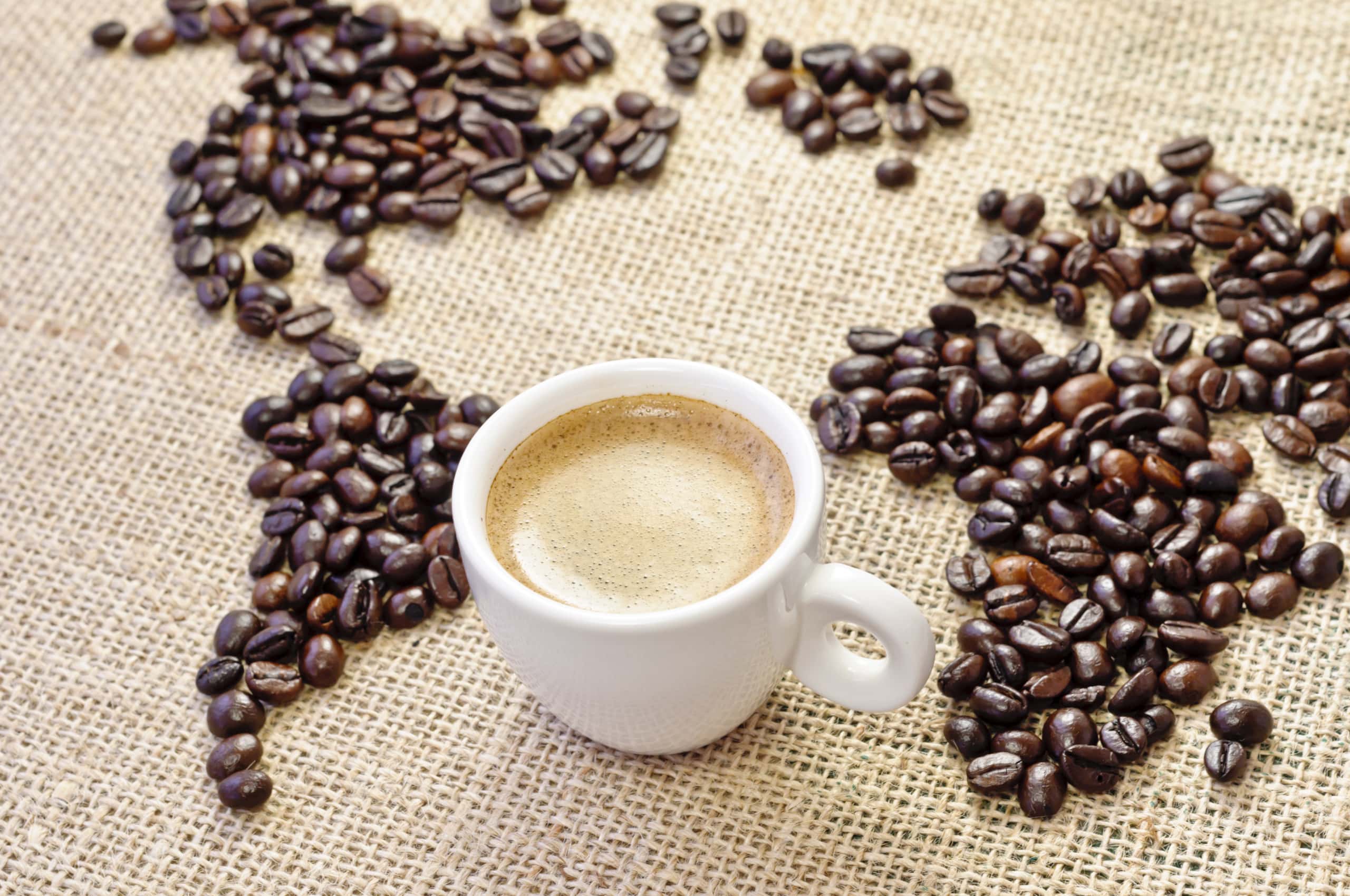A Coffee Journey
– 10 Steps From the Seed to Your Cup –
Is there actually any place in the world, where people don’t drink and enjoy coffee these days?
It’s quite simple. People love coffee.
Hence, the empowering, dark liquid is undoubtedly one of the most popular beverages in our today’s world.
Our own created coffee universe does not just offer us a wide range of many different and delicious coffee drinks.
In fact, coffee also naturally comes with a lot of great health benefits. Some coffee enthusiasts even say that it makes them happier and live longer.
But, what actually has to happen, so we can enjoy our beloved morning cup?
How does coffee become coffee?
This coffee journey starts at the farms and ends in our very own homes. Between the time the coffee seeds are planted, picked and purchased, the coffee beans go through a typical series of processes. This is to eventually bring out their best quality and flavor.
Here are the 10 steps from the coffee seed to your cup.
Let our journey begin.
-
Planting
First, the coffee bean as we know it, is actually and technically speaking a seed.
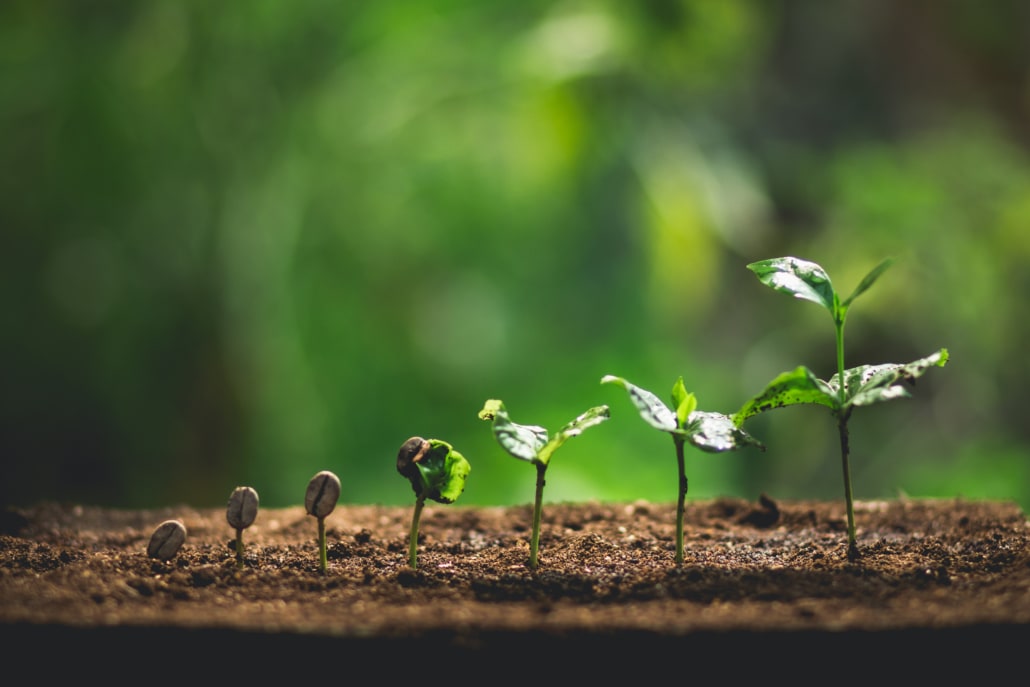
Later, when we are drying, roasting and grinding them, we finally use these very coffee seeds to brew our coffee.
But, during the initial planting stage, it is quite important that the seed isn’t processed in any way already. Otherwise, it cannot be planted and properly grow into a naturally productive coffee tree.
Commonly, farmers are planting the coffee seeds in large beds, being located in so-called shaded nurseries.
After having planted the seedlings, farmers are watering frequently. Additionally, the seedlings are usually shaded away from bright sunlight. This happens until they are normally strong and hearty enough to be permanently planted in the ground.
If you would like to learn more about the benefits and general thoughts of shade-grown coffee, then please click the relating article here.
Often times, the step of planting takes place during the common wet season in tropical countries, where coffee plants naturally grow and produce the best.
It helps, because the soil remains wet or moist at all times. Which supports the young coffee plant roots to become firmly established in the ground.
From this point on, the seedlings can continuously grow into the coffee plants as we know them.
-
Harvesting – A Coffee Journey
Besides many other coffee varieties, there are two top coffee types.
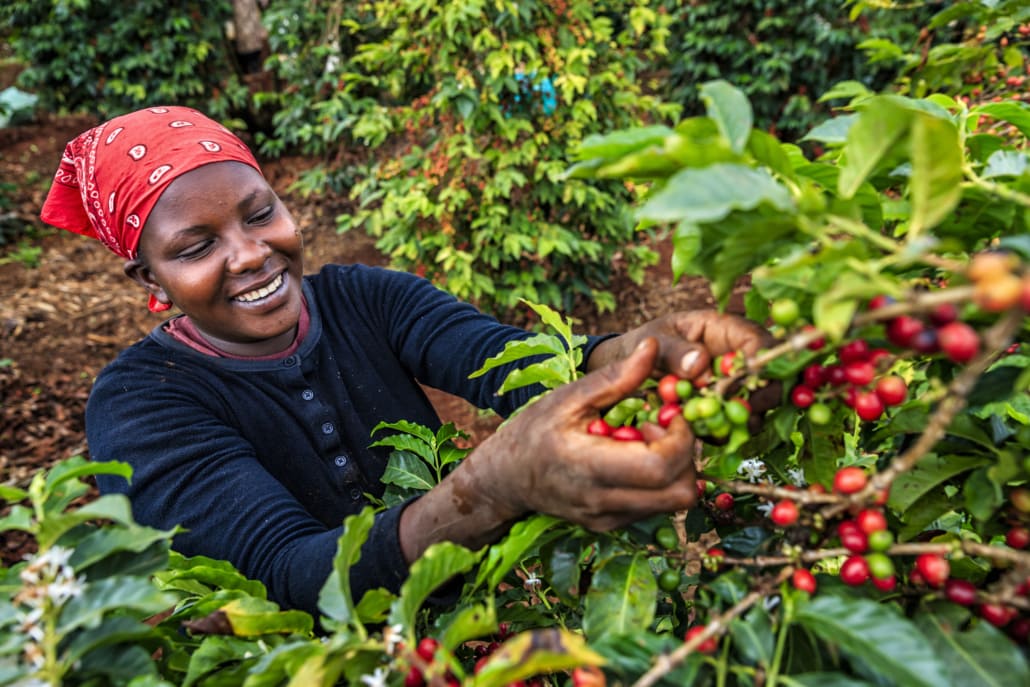
And, these basically dominate the entire world coffee market. While Arabica coffee beans roughly cover 60% of the whole world market, Robusta basically make up the remaining 40% itself.
This article will give you more insight about the differences between these two main types.
In general, it takes about 3 to 4 years until a newly planted tree bears first fruit.
Commonly, the fruit, which is also called coffee cherry, will typically turn from green color into a bright, red. At this point, the coffee cherries are ripe and ready to be harvested.
When working at a coffee plantation, there is usually one major harvest per year. However, in some countries you may also be able to harvest more than once.
For example, in countries like Colombia, there are two annual flowering seasons. This gives Colombian farmers the opportunity to harvest a main and secondary crop.
Furthermore, at most coffee plantations, farmers are picking the crop by hand. Hence, this is quite a labor-intensive and difficult work process.
But, in some other growing landscapes like the rather flat plantation lands in Brazil, which therefore produce huge amounts of beans, the picking process has been mechanized.
Moreover, whether you are picking your beans by hand or machine, all of the coffee is typically harvested in one or two ways.
Strip Picking
- During this method, harvesters are stripping off all coffee cherries of the branch at one time. Regardless, if this is happening by hand or machine.
Selective Picking
- You probably already guessed it. During the process of selective picking, you are basically only harvesting the ripe cherries. This is usually happening individually, cherry by cherry, and therefore by hand.
- For this method, pickers will typically rotate among the trees every 8 to 10 days. Every time, they are only choosing the cherries which are at their peak of ripeness. The others will remain on the branch.
- As you can imagine, this kind of harvest is especially labor-intensive and more costly. It is therefore mostly used to harvest the finer Arabica coffee beans. Because, they can also sell for better prices then.
On average, a good and skilled picker will manage to harvest between 50 to 100 kg of coffee cherries per day. (100 to 200 pounds)
Eventually, this amount will roughly produce around 10 to 20 kilos of coffee beans.
After every working day, each worker’s daily haul is carefully weighed and recorded. Because, companies or so-called cooperatives will pay its pickers on the exact result of merit of his or her work.
Overall, working and living conditions are not always good for the common workers at coffee farms. Most of our coffee comes from under-privileged and poorer countries. Whereas, most of the coffee is then consumed in wealthier and more developed nations.
Initiatives or movements like Fair Trade are trying to improve conditions. But, it is still a long way to go.
Lastly and after all ripe coffee cherries have been harvested, they are being transferred to the processing plant.
-
Processing
After you have picked the coffee, the step of processing should ideally start as quickly as possible. This is to prevent any potential fruit spoilage.
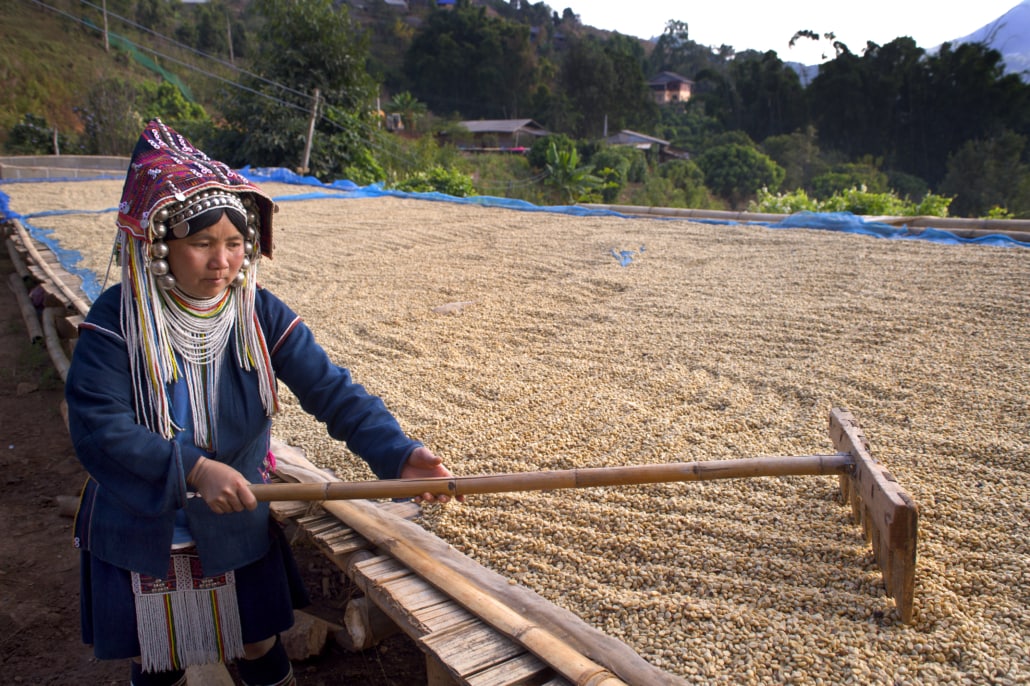
Usually, we are processing our coffee in two different ways. Which way people are eventually choosing, also depends on their location and the local resources they may have access to.
Dry Method
- The original dry method is basically the oldest method of processing coffee.
- Even until today, farmers are still using it in many countries. Especially when water is a precious and limited resource.
- Typically, you are simply spreading the coffee cherries out on huge surfaces. So, you can let them dry naturally in the sun.
- During the process, farmers are busy to prevent the cherries from any spoiling. This is why they constantly rake and turn them throughout the entire day. And, they will cover them during night time or rain. So, they won’t get wet.
- Overall, the process can go on for several weeks. Mostly, this depends on the local weather. The eventual goal is to dry each batch of coffee until the moisture content of the cherries drops to 11%.
Wet Method
- The wet method is rather new. You are basically removing the pulp from the coffee cherry after harvesting.
- Hence, this means that the bean is dried with only the parchment skin left on.
- As first step, you are letting your freshly harvested cherries pass through a pulping machine. So, the skin and pulp gets separated from the bean.
- Next, sorting machines are separating all beans by weight, as they pass through water channels. The lighter beans will simply float to the top. Whereas, the heavier and ripe ones are sinking to the bottom instead.
- Plus, they are passing through a series or rotating drums. These will also separate them by size.
- After the entire sorting and separation process has been completed, you are transporting them to large, water-filled fermentation tanks. How long the beans will remain in these tanks, which is roughly between 12 to 48 hours, depends on a combination of factors. For example, the condition of beans, the climate and the altitude itself play an important role.
- The fermentation process takes place to remove the slick layer of mucilage, which is actually still attached to the parchment at that point. This process will happen in a purely natural way. While the beans are resting in the tanks, naturally occurring enzymes will cause the layer of mucilage to dissolve.
- Once the entire process of fermentation is completed. You can feel that the beans have a rather rough touch to them.
- Lastly, you are rinsing and basically cleaning the beans by going through additional water channels for a last time. After, they are ready for drying.
-
Drying
In case the coffee beans have been processed by the wet method, the next step would be to let the fermented and pulped beans dry down to approximately 11% moisture.
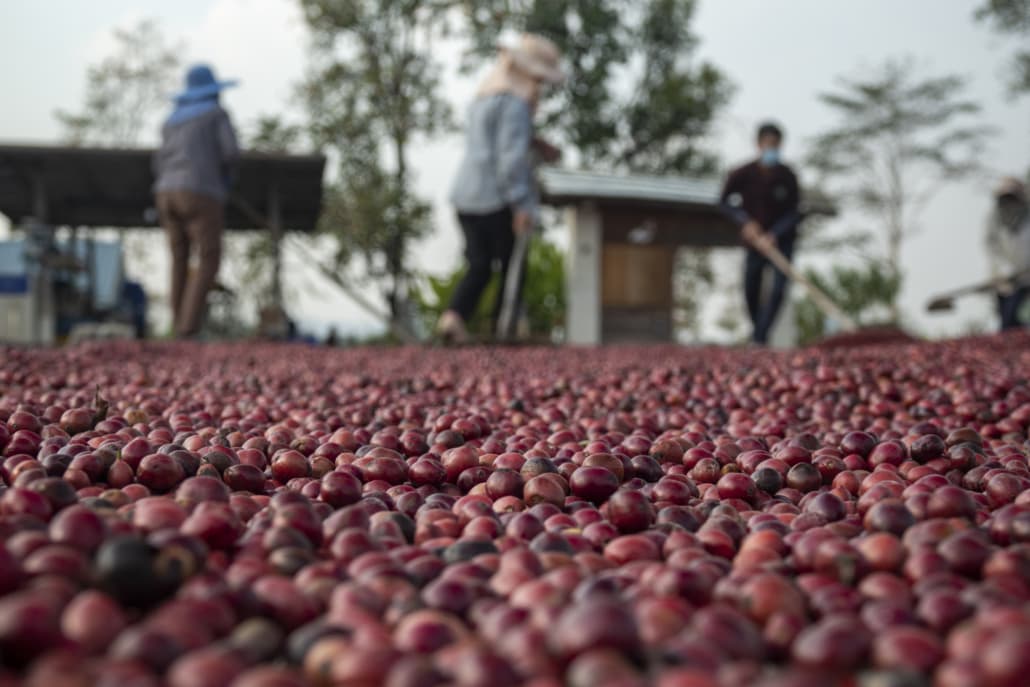
Drying them down is important to properly prepare them for storage.
Alternatively, the beans that are still inside the parchment envelope (endocarp) can be dried on common sun-beds.
Workers will simply spread them out on drying tables or floors. Here, they will turn them regularly. Or, they may also machine-dry them in large tumblers.
Once finished, the entirely dried beans are commonly known and referred to as parchment coffee.
Usually, they are then packed and stored in jute or sisal bags in warehouses, until they are ready to be exported.
-
Milling – A Coffee Journey
However, before we are exporting our coffee, there are a few other processing steps for the parchment coffee to go through.
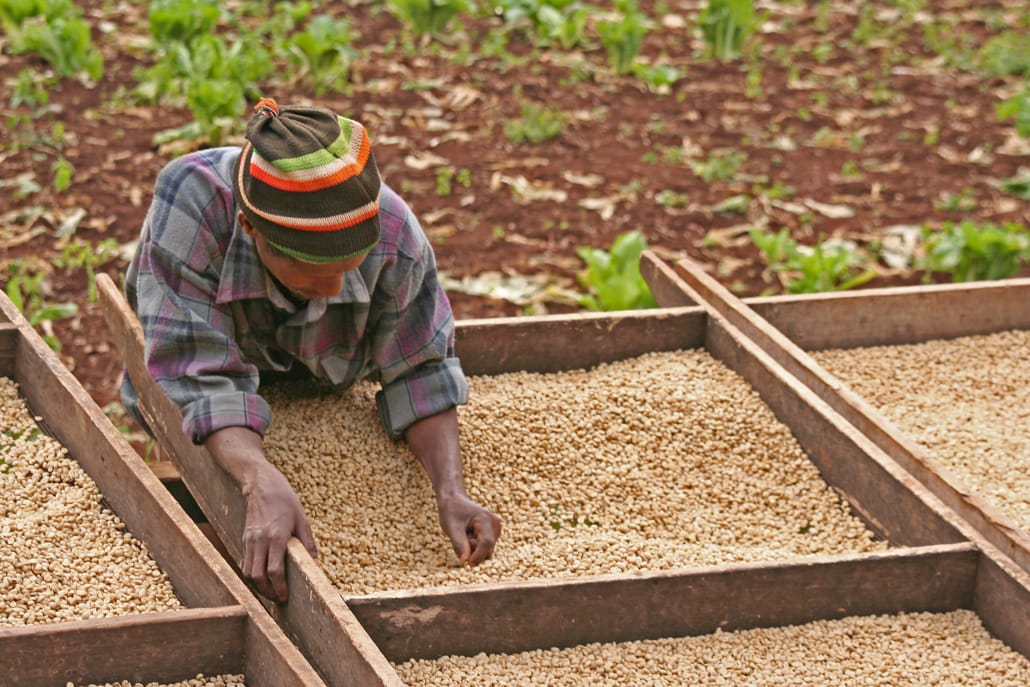
Hulling
- During this processing step, professional hulling machinery is removing the last parchment layer (endocarp) from the previously wet processed coffee.
- Basically, the method of ‘hulling dry processed coffee’ refers to removing the entire dried husk of the dried cherries. So, in particular the exocarp, mesocarp and endocarp.
Polishing
- The step of polishing coffee beans is actually an optional process. Not every coffee producer or farmer is including it in their overall process.
- Polishing means that any silver skin that remained on the beans after hulling will be removed by additional machinery.
- Many coffee experts or traders are considering polished coffee beans to be superior in quality than others. However and in reality, there is actually only little difference to notice.
Grading & Sorting
- Typically, workers are doing the process of grading and sorting coffee beans by their specific size and weight. In addition, they also review for any color flaws or other imperfections.
- Normally, the beans are being sized by letting them pass through a series of screens.
- Plus, machines are also usually sorting them pneumatically. This is happening by using an air jet and separating heavy from light beans.
- In general, you are representing a coffee bean’s size on a scale of 10 to 20. The number will indicate the size of a round hole’s diameter. To be exact, in terms of 1/64’s of an inch. This means, that a ‘number 10 bean’ has the approximate size of a hole in a diameter of 10/64 of an inch. Hence, a ‘number 15 bean’ would be 15/64 of an inch, and so on.
- At last, workers or machines are also sorting out and removing any remaining defective coffee beans. Common, unwanted deficiencies include unacceptable bean sizes, or color, over-fermented beans, insect-damaged, unhulled, and other factors.
- In the majority of coffee-producing countries and farms, this last sorting process is done both by hand and machinery. This is to ensure that only the finest quality coffee beans are further processed and exported.
-
Exporting
Now, that we have successfully milled the beans, we can finally refer to them as green coffee.
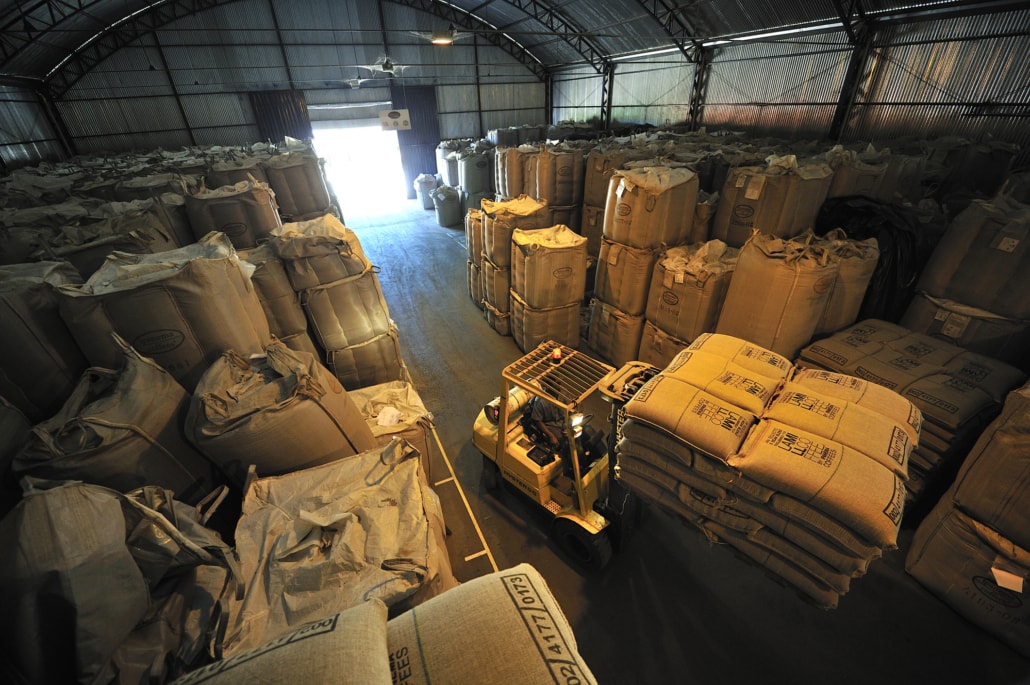
Our coffee journey takes a further step forward here. The green beans are loaded onto trucks, ships or sometimes even airplanes.
Typically, the beans are transported in either jute or sisal bags. And, these are loaded in commercial shipping containers. Or, they may also be bulk-shipped inside plastic-lined containers.
Leaving its place of origin, our coffee beans are usually arriving at its final destination, where the coffee will be further processed and also eventually consumed.
-
Tasting
Before the coffee is finally reaching our very own home or cup, it is repeatedly tested for quality and taste.
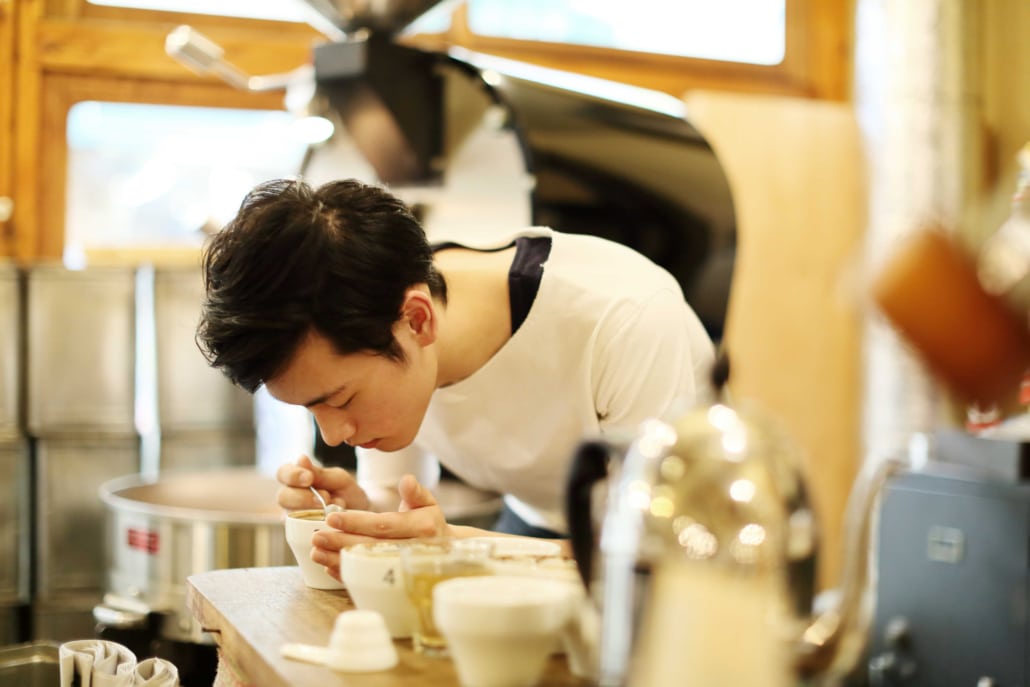
Technically speaking, this process is called coffee cupping. And, it usually takes place in a room, which was especially designed and facilitated for this purpose.
Coffee Cupping
- The taster itself is usually referred to as cupper. First, he or she evaluates the beans for their overall visual quality.
- After, the testing persons are roasting the beans in a small laboratory roaster. Then, they will also grind them immediately. Plus, they infuse them in boiling water with carefully-controlled temperature.
- Next, the cupper noses the brew. This is to experience the aroma, which is an essential step in judging the overall coffee’s quality.
- Then, the taster will let the coffee rest for a few minutes. A coffee crust will occur on the surface, which the cupper breaks by pushing aside the grounds at the top of the cup. Again, the testers are nosing the coffee before the actual tasting begins.
- Now, the tasting starts. For this, the cupper literally slurps a spoonful of coffee with a quick inhalation.
- The goal is to evenly spray the coffee over the cupper’s taste buds in his or her mouth area. And then, they weigh it on their tongue before spitting it out.
On a daily basis, professional cuppers taste many samples from a variety of batches and different beans.
In general, the job is not only to analyze and determine specific characteristics and flaws of a particular coffee type. But, they also highlight good combinations of blending different beans. Or, which roast would be best fitting for a certain batch of coffee beans.
If you are an expert cupper, you can efficiently taste hundreds of samples of coffee a day. And, you are still able to taste all of the subtle and characteristic differences between them.
-
Roasting – A Coffee Journey
Many coffee enthusiasts would say that the process of coffee roasting is an entire field of science in itself.
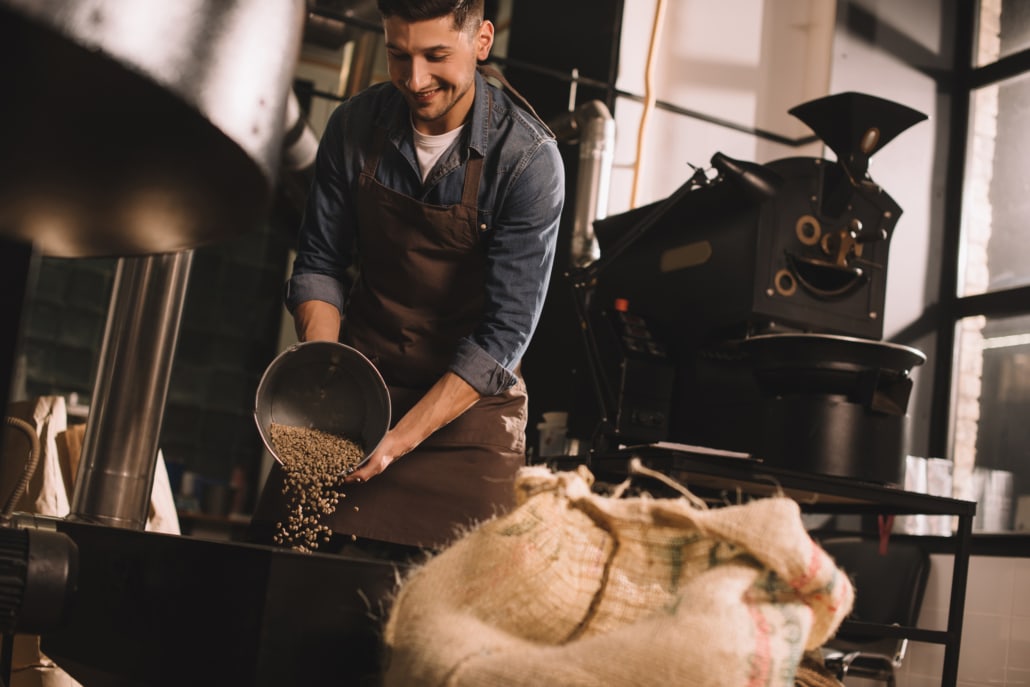
During roasting, we are essentially transforming our green coffee into the aromatic brown beans, which we like to buy at our local grocery shops or enjoy at homes or cafés.
Regular roasting machines usually maintain a temperature of about 250 degrees of Celsius. Throughout the entire roasting process, the beans are kept moving around. So, they will not get burnt but evenly roasted on all sides.
Once the beans reach an internal temperature of around 200 degrees, they will begin to turn brown in color.
At the same time, the caffeol will begin to emerge as well. Caffeol is a volatile oil, which is naturally locked inside the coffee beans. When you release it, it basically gives coffee its characteristic flavor and aroma.
People call this very specific process pyrolysis and describe it as the ‘heart of roasting’.
After, you roasted the beans. Ideally, you are immediately cooling them down right after. This commonly happens by either air or water.
In most cases, the process of roasting takes place in the coffee-importing countries. Because, once you freshly roasted your coffee beans, they should reach the end consumer as quickly as possible.
There are different roast levels you can use, depending on the type of coffee you are aiming to make.
Roast levels range from light, medium to dark roast. You can learn more about roast levels in this article.
-
Grinding
As there are different roast levels to consider, you can say the same about different grind levels, too.
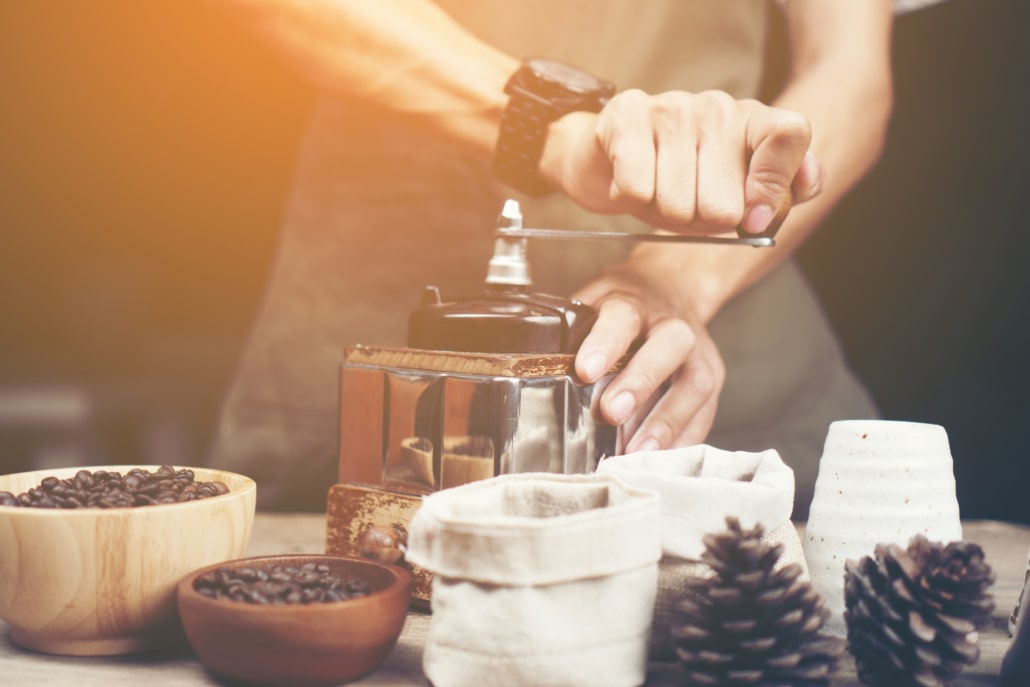
In general, the main goal or objective of a proper grind is to ideally get most of the flavor out of the beans into your cup of coffee.
Additionally, it also depends on the particular brewing method you are choosing to use for your coffee. Therefore, a coffee grind can range from rather coarse all the way to powdery fine.
Basically, however long enough the coffee grounds will be in contact with water eventually determines the ideal grade of grind.
So, in other words, the finer the grind you are using, the quicker the coffee should better be prepared. That is also why ground coffee for an espresso is much finer than for filter coffee, for example.
You are making an espresso much faster in order to get the best flavors out of your ground coffee.
-
Brewing
There are many interesting and excitingly different ways you can brew coffee.
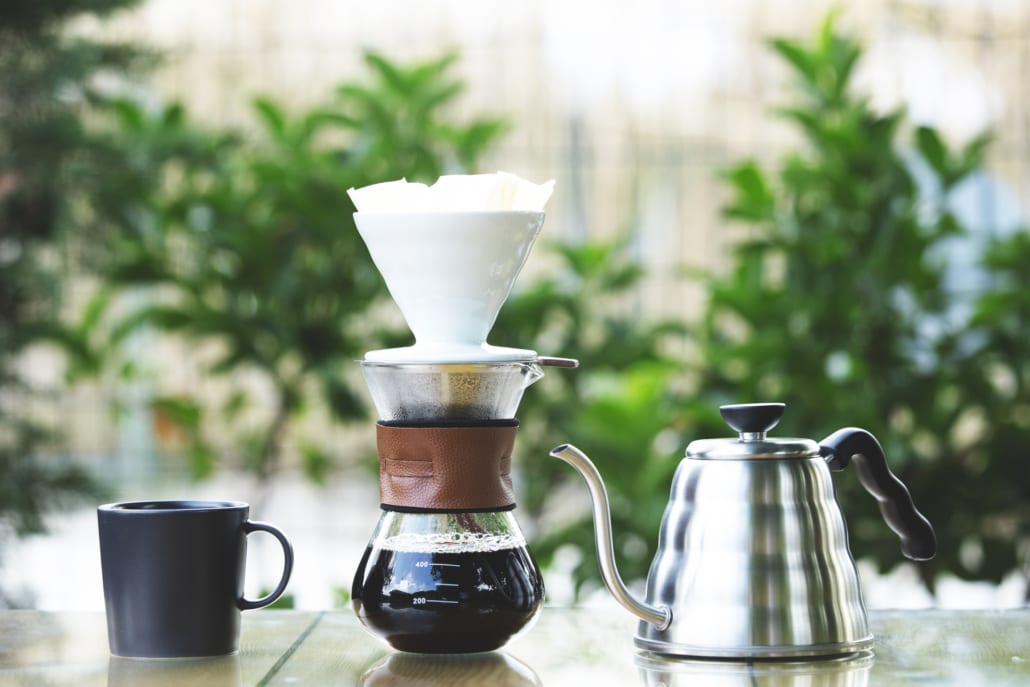
Nowadays, many coffee lovers like to manually brew coffee by themselves. Therefore, creative coffee minds came up with various manual brewing methods. These allow for a better quality control and a superior coffee experience.
Of course, one of these fascinating methods are drip coffee bags, which we also produce and offer ourselves at Siam Hills Coffee.
For many coffee enthusiasts, it is just more fun and personal to have a hands-on approach with their very own brewing process, rather than just hitting a ‘brew’ button on a machine.
But, please don’t get me wrong. There are also many great brewing machines out there. Generally, these can also make fine tasting coffee. And, you can especially find them in many coffee shops or cafés around the world.
Nonetheless, if you are interested in manual brewing, here are some of the most popular and easy-to-use tools and methods.
Coffee Filter Cone – Pour Over / Drip
This is surely one of the oldest, simplest, fastest and also cheapest ways to brew coffee.
Essentially, all you will need is a coffee cone and paper filter. Then, you just pour your hot water evenly over your coffee grounds in the paper filter. After, earth’s gravity itself will do its work and the coffee drips slowly and directly into your cup or pot.
Usually, coffee cones are commonly made of plastic, glass, stainless steel or ceramic. Whichever exact shape and matching filter you are choosing can influence the final flavor quite significantly.
Many coffee lovers literally swear on filter coffee and its benefits.
Our own below drip coffee bags probably also more or less fall in this category, I would say.
Chemex – Pour Over / Drip
Just looking at the Chemex, already pleases your eye. At least, that is how I feel about it.
The Chemex is a beautifully designed and elegant pour over, glass flask. It was invented by a certain Dr. Peter Schlumbohm in 1941. In order to make coffee with it, the Chemex requires you to use a special paper filter. And, this filter is usually 20 to 30% heavier than other regular filters.
Furthermore, the actual coffee brewing method itself is quite similar to the coffee cone. Here, you also pour hot water over grounds in a paper filter. After, the brewed coffee slowly drips into the bottom of the glass flask.
French Press – Plunger / Press
The French Press method was invented in 1929. Many people consider it to be the best and easiest method for brewing superior and consistent coffee.
Apparently, this method extracts seemingly more superior flavors than any other coffee brewing process.
In simple terms, the French press is a ‘press pot’. You essentially soak, steep and strain your ground coffee in hot water. Therefore, the coffee’s flavorful essential oils, caffeine and antioxidants are better diffused and preserved. And, this leaves the purest flavors of the coffee.
The French press method especially seems ideal for coffee drinkers, who enjoy a luscious, expressive and complex coffee taste experience.
AeroPress – Plunger / Press
Compared to other devices and methods, the AeroPress is still relatively new. It was only created and launched around the year of 2005.
Typically, the AeroPress comes in 3 plastic parts. A filter is sitting as a coffee basket at the bottom of the chamber. Furthermore, coffee grounds rest in the brew chamber where you are then adding the hot water in order to immerse and steep the coffee.
And, to extract the coffee, you are pressing down a plunger. This creates air pressure and forces the brewed coffee through a filter into a cup.
Stovetop Moka Pot – Percolate
Originally, the very popular and widely used Moka Pot was invented by a gentleman, called Alfonso Bialetti, in 1933.
In general, stovetop coffee makers, like the Moka Pot, use steam pressure from boiled water in the lower section to pass through coffee grounds in the mid chamber of the pot. The brewed coffee itself sits in the higher chamber then.
The better the particular stovetop is designed, the better it will typically create pressure and brew coffee.
In summary, these are some of the most commonly used coffee brewing methods. But, there are many other fascinating coffee making processes to try out there.
-
Extra: Enjoying
Lastly, the very final step is about us.

After this long coffee journey and all of the various steps we have just highlighted. The final step is up to us.
There are many ways to eventually enjoy our very own cup of coffee. Some simply drink black coffee and greatly appreciate the caffeine boost.
Other coffee lovers opt for decaf coffee instead, for example. In addition, many ‘coffee addicts’ like to sweeten up their daily coffee with either milk or sugar additives.
However, there are also many great ways to make your coffee healthy. Or, you can even choose to use other milk alternatives or try some other natural sugar substitutes.
No matter, if you are choosing some of the stranger coffee drinks out there. Or, simply one of the most popular and favorite coffee drinks. At the end of the day, it is all about our very own coffee experience and the way we like to appreciate and enjoy our individual coffee the most.
Final Thoughts – A Coffee Journey
So, how about you?
How do you like to prepare and enjoy your coffee the most?
Is there anything else important to mention when it comes to the coffee journey and its 10 steps from the seed to our cup?
Feel free to share your thoughts and experiences with us.
Until then, stay safe, healthy and properly caffeinated.
Cheers!

